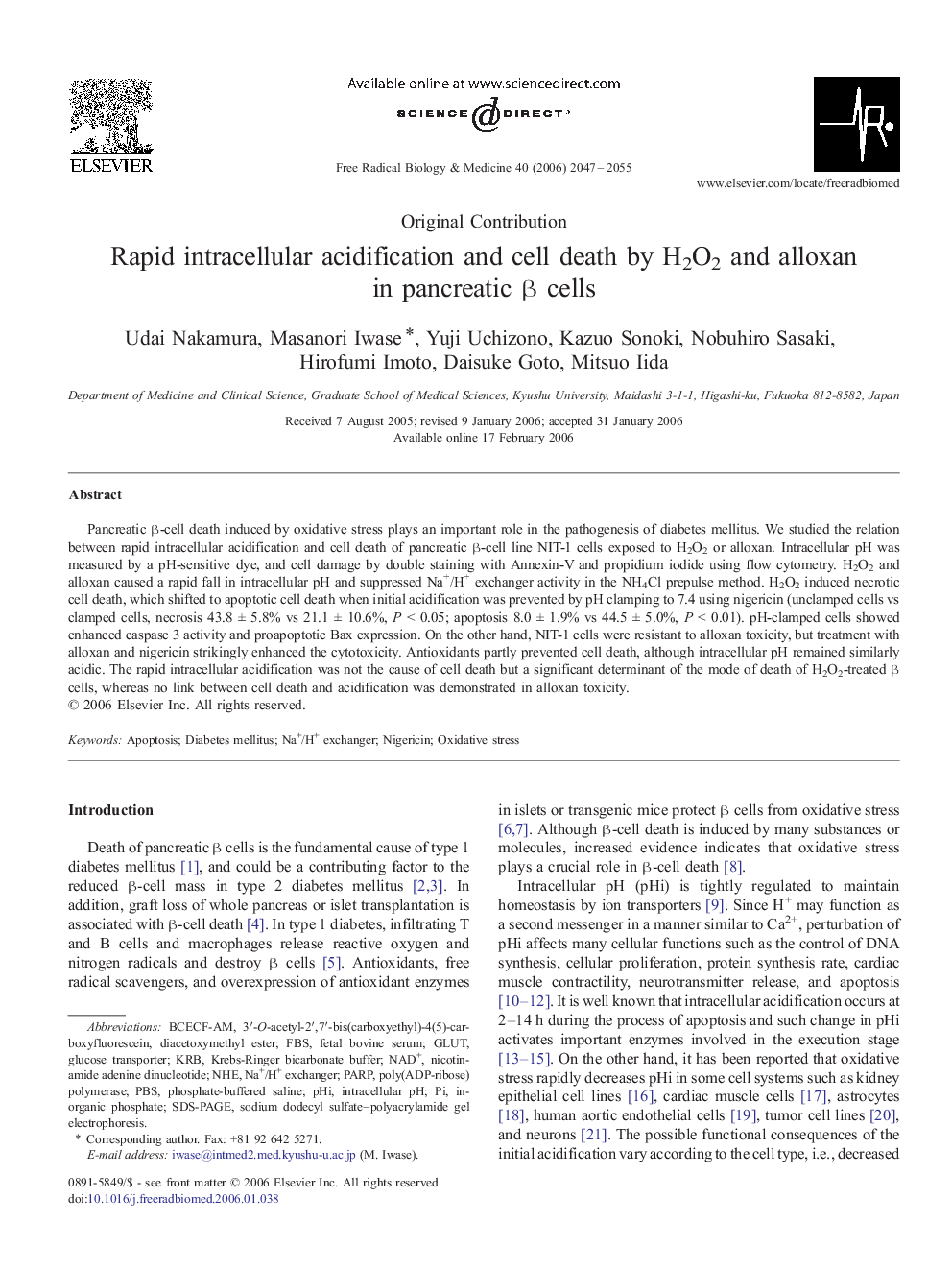| Article ID | Journal | Published Year | Pages | File Type |
|---|---|---|---|---|
| 1911635 | Free Radical Biology and Medicine | 2006 | 9 Pages |
Pancreatic β-cell death induced by oxidative stress plays an important role in the pathogenesis of diabetes mellitus. We studied the relation between rapid intracellular acidification and cell death of pancreatic β-cell line NIT-1 cells exposed to H2O2 or alloxan. Intracellular pH was measured by a pH-sensitive dye, and cell damage by double staining with Annexin-V and propidium iodide using flow cytometry. H2O2 and alloxan caused a rapid fall in intracellular pH and suppressed Na+/H+ exchanger activity in the NH4Cl prepulse method. H2O2 induced necrotic cell death, which shifted to apoptotic cell death when initial acidification was prevented by pH clamping to 7.4 using nigericin (unclamped cells vs clamped cells, necrosis 43.8 ± 5.8% vs 21.1 ± 10.6%, P < 0.05; apoptosis 8.0 ± 1.9% vs 44.5 ± 5.0%, P < 0.01). pH-clamped cells showed enhanced caspase 3 activity and proapoptotic Bax expression. On the other hand, NIT-1 cells were resistant to alloxan toxicity, but treatment with alloxan and nigericin strikingly enhanced the cytotoxicity. Antioxidants partly prevented cell death, although intracellular pH remained similarly acidic. The rapid intracellular acidification was not the cause of cell death but a significant determinant of the mode of death of H2O2-treated β cells, whereas no link between cell death and acidification was demonstrated in alloxan toxicity.
